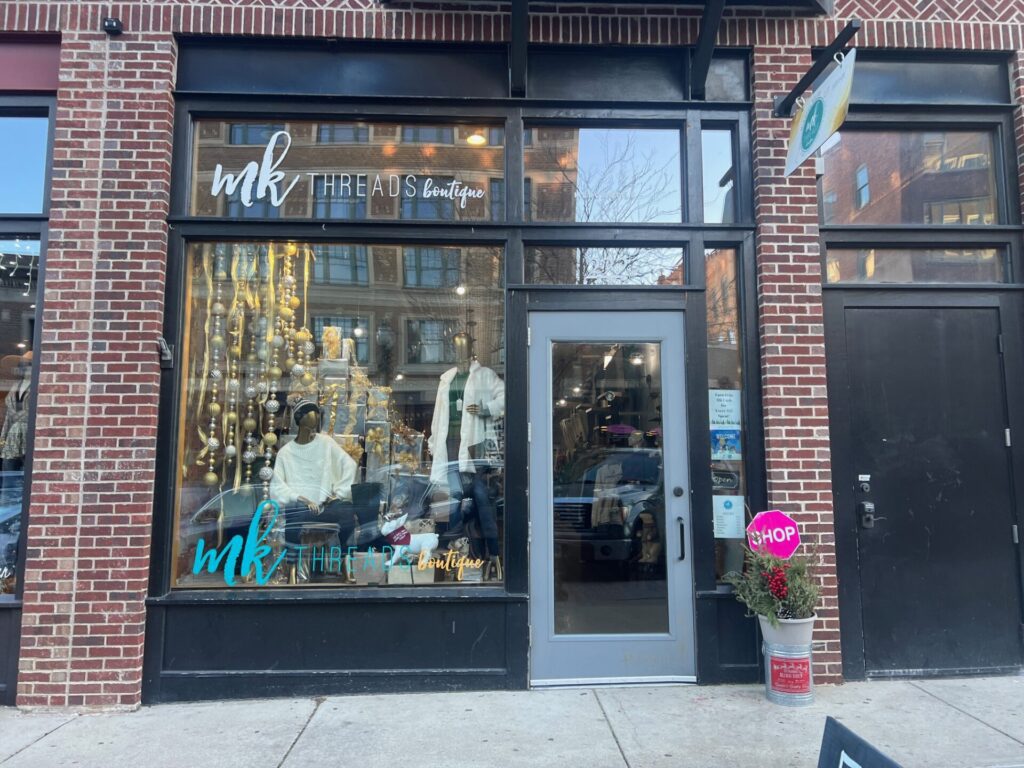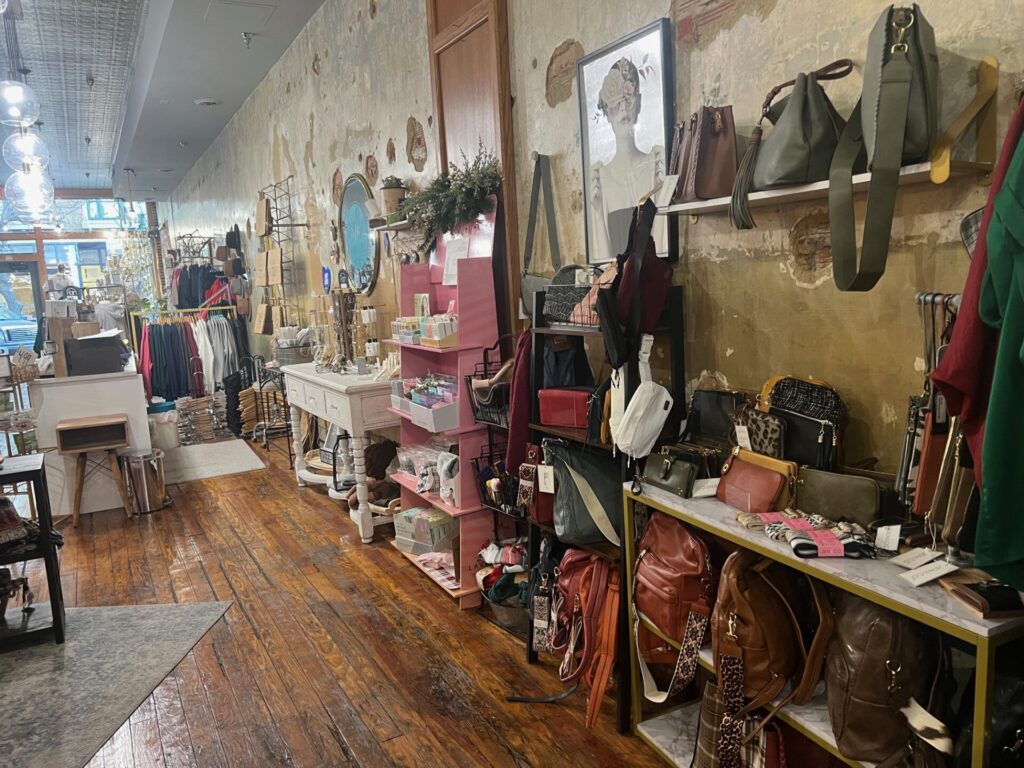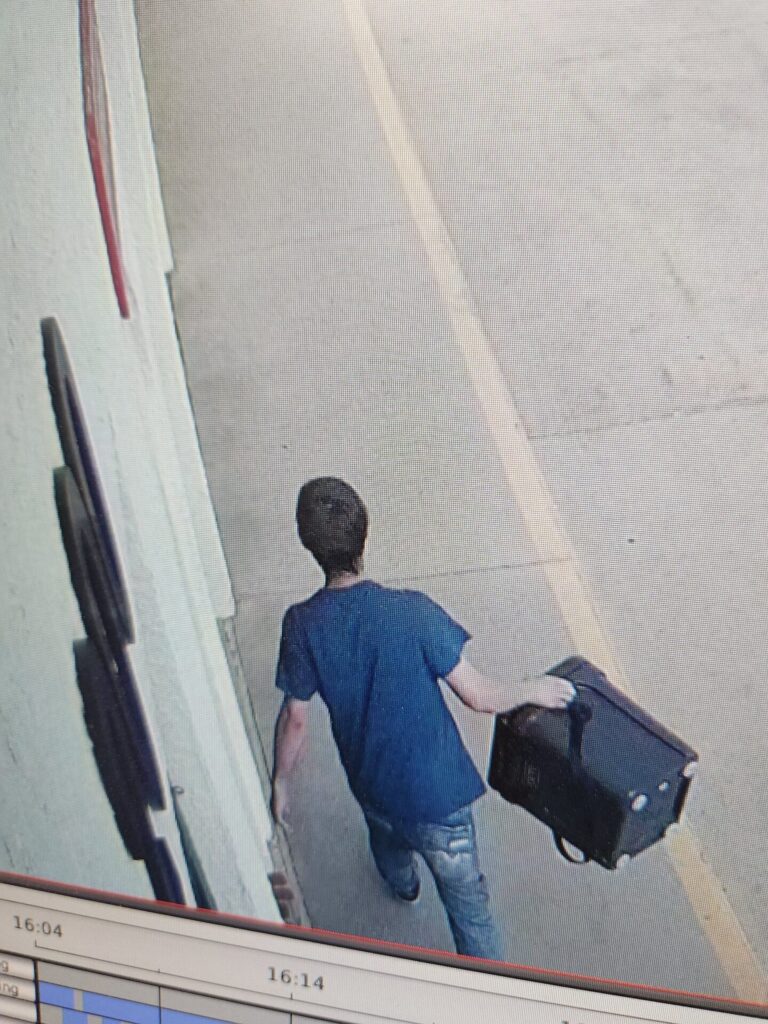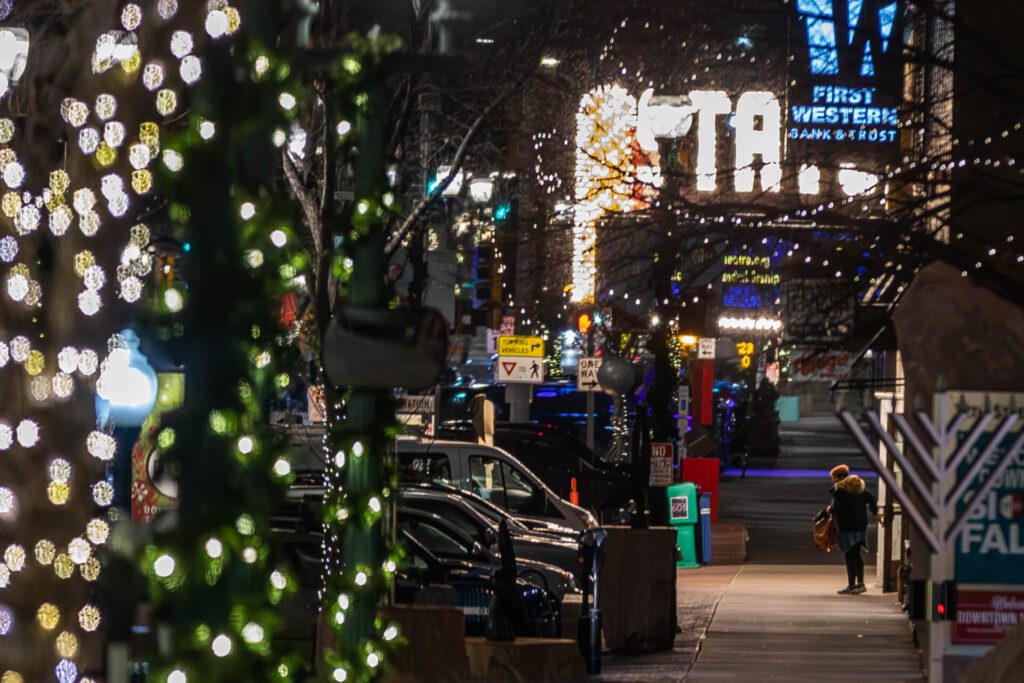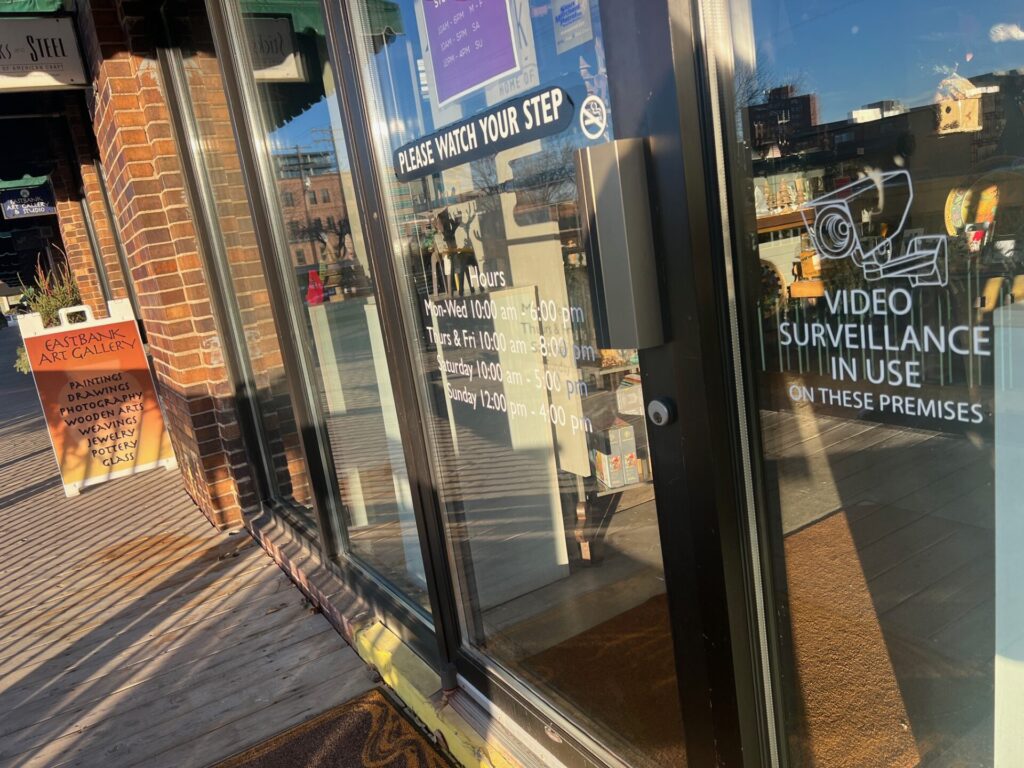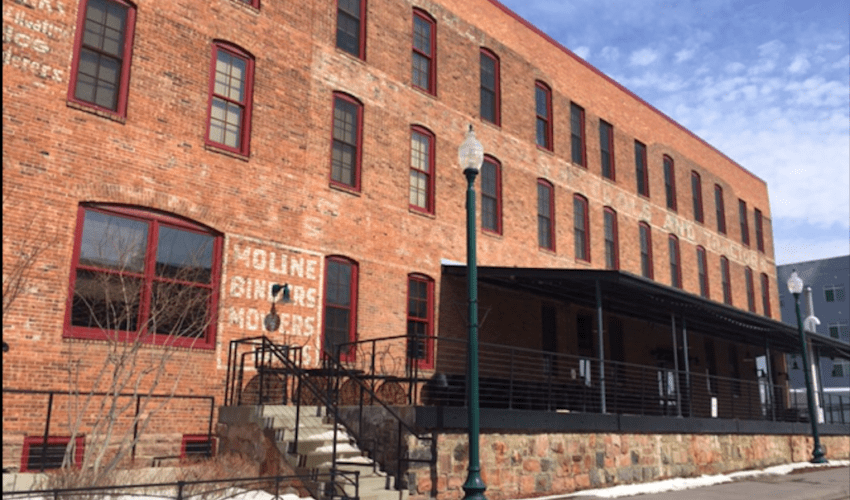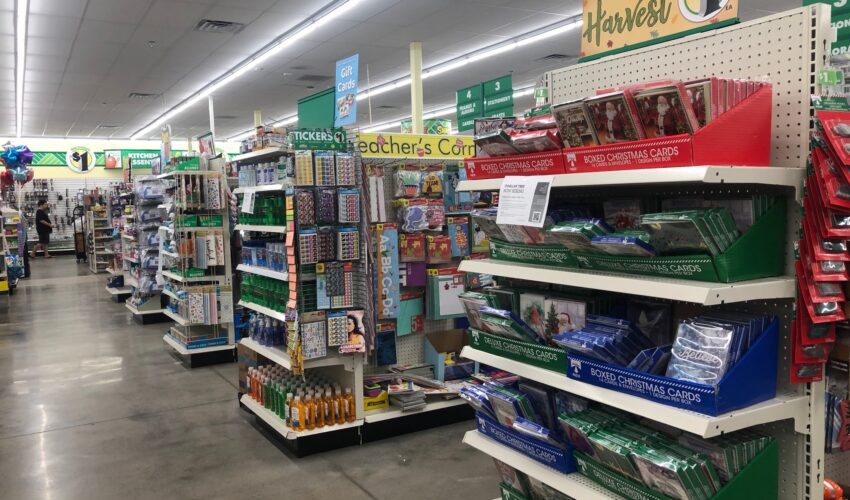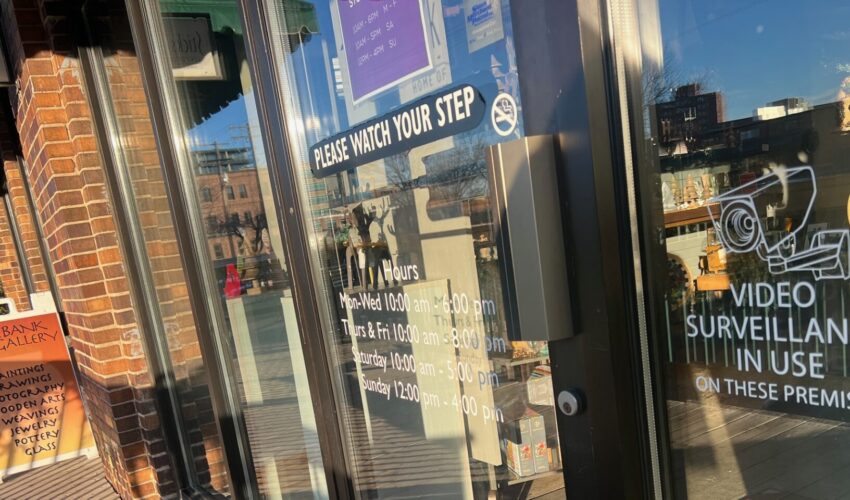As organized retail crime hits larger cities, Sioux Falls retailers seeing theft hit close to home
Dec. 18, 2023
Kelly Grovijahn was so mad she didn’t think twice earlier this year before chasing after the shoplifter who conned her employee.
“I walked around back by the bus station and came around over by Vishnu Bunny, and there she was just sitting outside having a cigarette at their table,” said Grovijahn, the owner of MK Threads Boutique on Phillips Avenue.
“I walked right up to her, and I said, ‘If I ever f-ing catch you in my store again, I’m going to call the cops, and I’m going to press charges.’”
Then, Grovijahn looked and saw a purse from her boutique sitting at the top of the woman’s shopping bag.
“I said: ‘Thanks for my merchandise back. Don’t you ever show your face in my business again.’ And I grabbed the purse and walked away,” Grovijahn said.
Minutes before, the woman had been browsing in the boutique when she dropped a folder full of papers. Grovijahn’s employees had stooped down to help pick them up, and – as a security camera revealed – the woman used that moment of distraction to grab a handbag off the wall and walk off with it.
“On the way back, I stopped in all the retailers and said, ‘Just so you know, here’s a picture of her.’ Two stores said she’d been in there, but she hadn’t stolen anything,” Grovijahn said. “I said: ‘I’m telling you. She did steal from you guys. Her bag was full.’”
Shoplifting is nothing new in retail, but the level of brazenness and coordination being used in it is changing, those in the industry say.
Nationwide, organized retail crime, which is different from individual shoplifters swiping items for their own use, is such a major issue it consumed a recent meeting Mayor Paul TenHaken attended in Washington, D.C., with the National Retail Federation.
“We spent 80 percent of our time talking about organized retail theft. Austin (Texas) and New York are getting eaten alive by it,” TenHaken said. “In Sioux Falls, it’s just starting. I think we’re really close to having that be an issue that we’re going to have to put resources to and deal with.”
Organized retail crime involves individuals working together to target a store or coordinating efforts to resell stolen merchandise, said Nathan Sanderson, executive director of the South Dakota Retailers Association.
“One person distracts the clerk, the employee … while two others take items, whether it’s jeans, small electronics, tools, especially power tools. They load up a cart and head out the door while the staffer is distracted, or they hide it. Put CDs in your coat or whatever,” he said. “We know they’re taking place because people have been caught doing it.”
While organized retail crime is “a major, major concern” for national big-box retailers and drugstores, South Dakota is lagging the country, Sanderson continued. “But it certainly exists, and it’s becoming more and more prevalent.”
At Nyberg’s Ace Hardware, owner Kevin Nyberg agrees.
“I’m very thankful the mayor recognizes this is a problem,” he said. “Has shoplifting increased over the last six to eight months? Absolutely. People are more daring. They’re more bold. We as retailers, and I’m not the only one, have had to pick up our game. Whether you pick it up through electronic devices, cameras, security guards, whatever it is, we’ve had to pick up our game.”
Those stealing merchandise are both men and women with no age barrier, he added.
This person was captured on camera stealing a cooler from Nyberg’s Ace.
“I’d like to think we have less (theft) because we go out of our way and recognize customers when they come in the store,” he said. “We’re helpful. Helpful means somebody is watching them. So that’s our culture. And it’s a big deterrent when we wait on customers. But you can’t be everywhere.”
The shoplifting numbers so far this year are tracking ahead of last year but not beyond historical averages:
- 2023, through November: 1,610
- 2022: 1,547
- 2021: 1,069
- 2020: 1,845
- 2019: 2,087
“We have not experienced any flash mobs, and organized retail theft is very rare,” police spokesman Sam Clemens said. “There occasionally are groups of three to five people that fit the profile of organized retail, and those groups are rarely local. When they happen here, we often received intelligence from regional law enforcement the same group is moving through the area. Shoplifting is very common but is one person stealing from a store.”
Another frustration for retailers: Not every jurisdiction prosecutes the same. When a group of retail thieves was caught in Minnesota that also had stolen from a Sioux Falls business, they weren’t prosecuted because the amount stolen wasn’t enough to constitute a felony, Sanderson said.
“I want to stress we haven’t had any challenges with the South Dakota state’s attorneys or law enforcement, but we haven’t seen the prevalence of this in South Dakota as we have in other jurisdictions, so it behooves us to get ahead of it before it becomes a problem,” he said, adding he recently met with the Sioux Falls Police Department to discuss the issue.
“This is not a victimless crime. For a business to make back the stuff it loses to theft, you have to charge customers more. There are items that used to be out and available on shelves that now are locked up, whether it’s colognes or perfumes or smaller electronics, everything from an electric razor to a small kitchen appliance. Those things are getting locked away because retail businesses don’t want them to walk off.”
The pattern Downtown Sioux Falls Inc. president Joe Batcheller has noted is “shoplifting to fuel addiction … swiping liquor,” he said, adding the situation is nothing like the organized crime experienced elsewhere.
“Most stores have cameras now. It’s a pretty affordable option these days. It’s not a deterrent for some shoplifters though. Recently, more businesses have invested in personnel and security to prevent losses. Sunshine (Foods) has posted a person by the door to prevent thefts.”
The Sioux Falls Police Department is “very, very good at helping us find out who the individual was” in the case of theft, Nyberg said. “It’s the end game, the prosecution, where I have concern. What did they learn from what they did? Did they learn anything, or are they going to do it again?”
His employees are told never to confront people stealing, he said.
“That’s not a safe situation. Therefore, the thief gets away, and you rely on surveillance, and a lot of small retailers can’t afford it. Law enforcement and retailers have to work together, whatever that means, to curtail this problem.”
TenHaken said any retail theft should be reported so police can begin tracking trends.
“If someone walks out of your store with a $20 bottle of vodka, call it in,” the mayor said. “I’m not interested in putting people in jail for shoplifting, but I am interested in making an example of our people who do this as an example that it won’t be tolerated. I think we’re going to take a very tough-on-crime approach, and we’re encouraging retailers to position their stores accordingly.”
A group to fight organized retail crime that meets periodically to compile best practices is a tactic in other cities and something “Sioux Falls needs to form sooner than later,” he added.
“Be thinking about crime as part of your strategy. Just to let people go or not have security could have an impact on your operations.”
Back at MK Threads, Grovijahn is quick to point out she wouldn’t want or expect an employee to chase after a thief the way she did. Instead, employees are encouraged to stay close to customers who seem suspicious, hoping if they feel uncomfortable enough, they’ll leave.
“We have loss every month,” she said. “On average, probably four or five items that go missing. So it’s a problem. It’s definitely a problem. But we don’t just let them steal whatever they want. Some businesses do. We do not.”

